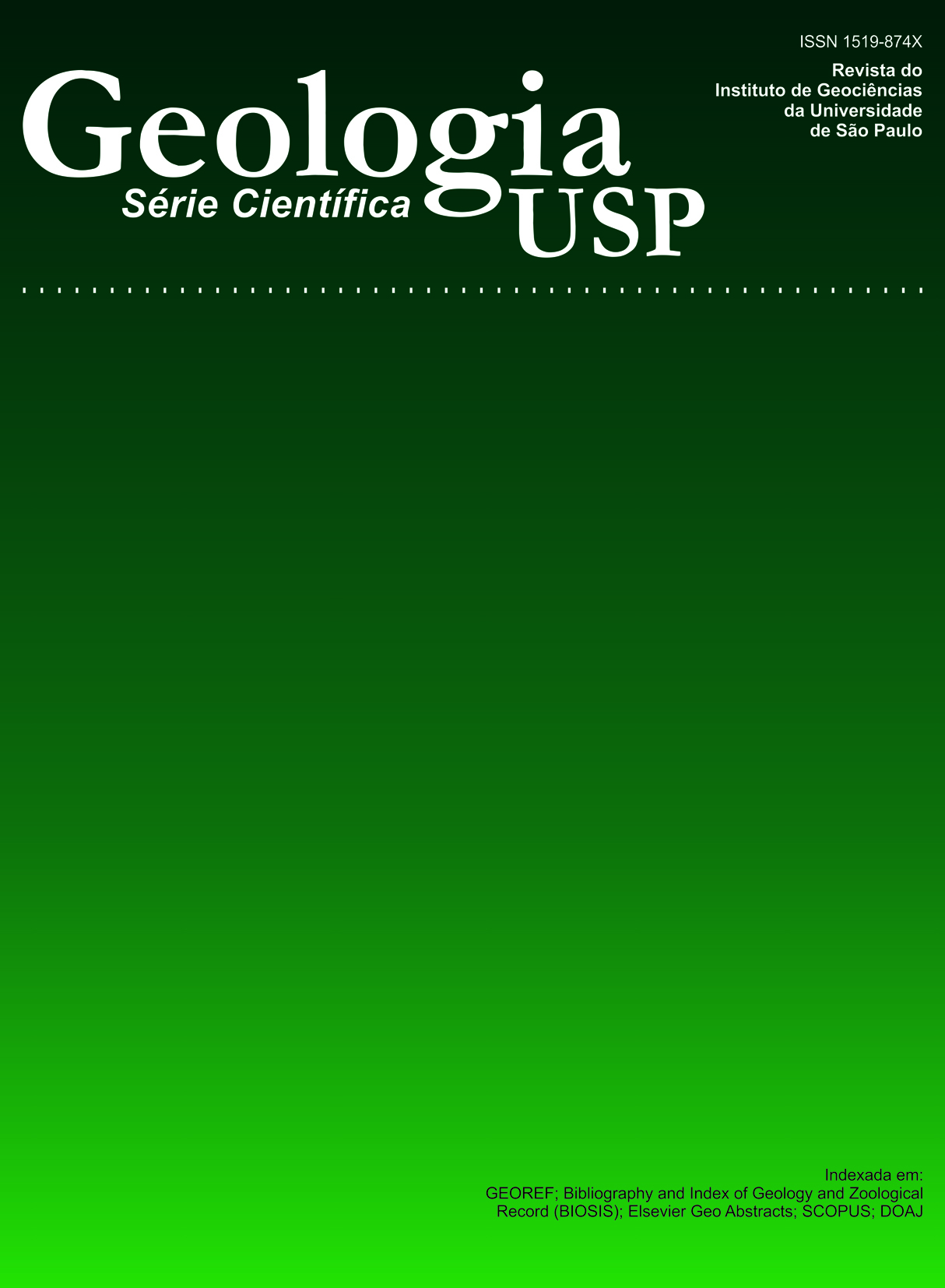Analytical Bias in Taphonomic Studies of Macro-invertebrates: (Paleo)Environmental and (Paleo)Ecological Implications
DOI:
https://doi.org/10.5327/Z1519-874X2009000100007Keywords:
Brachiopods, Sieve size, Taphonomic signatures, Bioclast size, Ubatuba bay, HoloceneAbstract
A review of recent literature shows that most taphonomic studies of Holocene and fossil macrovertebrates are not methodologically standardized. Hence, results from distinct studies are not comparable, even among researches sharing virtually identical goals, targeting the same biological group of similar age and depositional environment. The effects of the shell size in the taphonomic analysis are still poorly understood. In order to study this issue, the taphonomic signatures (articulation, valve type, fragmentation, abrasion, corrosion, edge modification, color alteration, bioerosion and encrustation) of brachiopod shells [Bouchardia rosea (Mawe)], from Ubatuba Bay in the northern coast of São Paulo State, were investigated according to the sieve sizes. In the study area, 14 collecting stations were sampled via Van Veen grab sampler, along a bathymetric gradient, ranging from 0 to 35 m of depth. Bulk samples were sieved through 8 mm, 6 mm, and 2 mm mesh sizes, yielding a total of 5.204 shells. The results indicate that, when taphonomic signatures were independently analyzed per size classes (8 mm, 6 mm, and 2 mm), the taphonomic signatures are recorded in a complex and random way. Additionally, cluster analysis showed that the similarity among the clusters vary according to the considered sieve size. Thus, the sieve size plays an important role in the distribution of taphonomic signatures in shells of distinct sizes. These results suggest that the concentration of the taphonomic analysis on one class (e.g., the largest sieve size, 8 mm) is not always the best method. Rather, the total data (all sieves included) seems more accurate in recording the whole spectrum of taphonomic processes recorded in shells of a given assemblage.Downloads
Download data is not yet available.
Downloads
Published
2009-01-01
Issue
Section
Articles
License
Authors who publish in this journal shall comply with the following terms:
- Authors keep their copyright and grant to Geologia USP: Série Científica the right of first publication, with the paper under the Creative Commons BY-NC-SA license (summary of the license: https://creativecommons.org/licenses/by-nc-sa/4.0 | full text of the license: https://creativecommons.org/licenses/by-nc-sa/4.0/legalcode) that allows the non-commercial sharing of the paper and granting the proper copyrights of the first publication in this journal.
- Authors are authorized to take additional contracts separately, for non-exclusive distribution of the version of the paper published in this journal (publish in institutional repository or as a book chapter), granting the proper copyrights of first publication in this journal.
- Authors are allowed and encouraged to publish and distribute their paper online (in institutional repositories or their personal page) at any point before or during the editorial process, since this can generate productive changes as well as increase the impact and citation of the published paper (See The effect of Open Access and downloads on citation impact).
How to Cite
Rodrigues, S. C., Simões, M. G., & Pires-Domingues, R. A. (2009). Analytical Bias in Taphonomic Studies of Macro-invertebrates: (Paleo)Environmental and (Paleo)Ecological Implications . Geologia USP. Série Científica, 9(1), 101-114. https://doi.org/10.5327/Z1519-874X2009000100007





